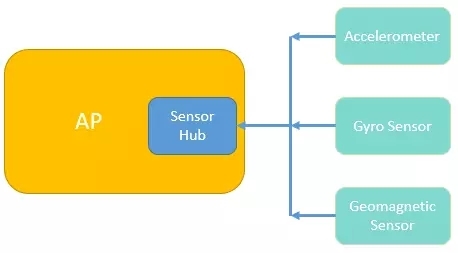Lei Feng network (search "Lei Feng network" public concern) by: This article author 7Tens, mobile phone industry more than ten years veterans. The article first appeared in WeChat public number "Semiconductor Industry Watch" (public ID: icbank).
Last night, Samsung held a conference to bring the latest generation of flagship Galaxy Note 7, in addition to Samsung proud of the hyperboloid screen, in addition to the new mobile phone also with the previously popular rumors of iris recognition . There is no doubt that the Samsung Galaxy Note 7 will set off a competition whirlwind of Android smartphones in the second half of the year.
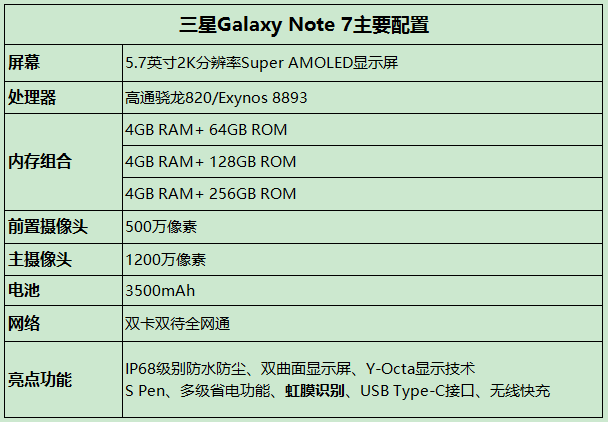
Galaxy Note 7 configuration list
However, Galaxy Note 7's "black technology" is far more than these two. In this article, we will take a closer look at the iris recognition and Sensor Hub on Samsung's new mobile phones to bring everyone into a new world of technology.
I. Iris recognition of Note7 secret weaponIf you want to choose one of the most exciting new technologies for the Galaxy Note 7, I believe it should be iris recognition.
Since Apple introduced fingerprint recognition on the iPhone 5s, the mobile phone industry has launched a crazy chase on this new way of protecting mobile phone security. However, traditional fingerprint identification will bring certain difficulties in security and unlocking. So Samsung brought iris recognition on its new flagship.

What is iris recognition
Iris recognition is a kind of biological recognition method. The working method is to check the iris structure in the eyeball of the user to achieve the purpose of user information confirmation. Since the human iris does not change for life, even the normal myopia, cataract, and pink eye diseases do not cause any damage to the iris. These characteristics determine the characteristics of the iris and the uniqueness of the identification.
The main process of iris recognition is divided into iris detection, iris live detection and user identification.
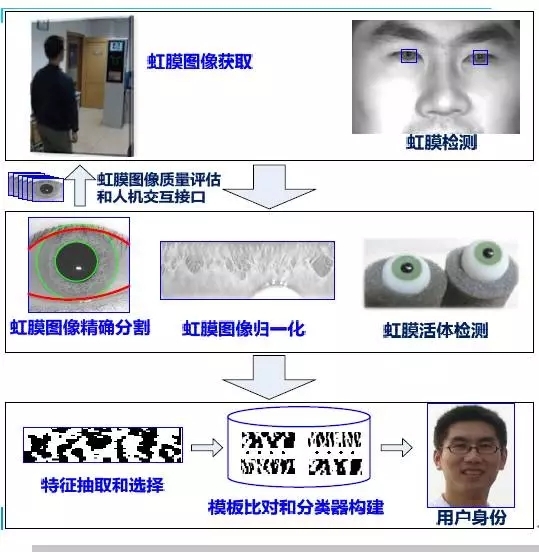
Iris recognition flow chart solution
According to observations, the current method of iris recognition is mainly to achieve the unlocking of the iris through infrared scanning. In actual application, a light emitting diode (IR) and a light receiving sensor are used. When the iris is detected, the infrared LED is firstly turned on. The LED emits infrared light, strikes the human eye and reflects it back. The iris camera captures the image for recognition by the back-end algorithm.

Iris recognition module simple composition
Iris Recognition Opportunities and Challenges
The reason why Samsung uses the iris recognition on the new flagship is mainly because it is faster and safer than fingerprints. Since the uniqueness of the iris and the nature of the recognition are largely unaffected by the outside world, it may even be possible to replace fingerprint recognition to perform functions such as payment in the future. According to our summary, the advantages of iris recognition are as follows:
1. Uniqueness: Physiological studies have shown that the detailed features of the iris texture are determined by the random factors of the embryonic development environment. This random distribution of the texture details establishes the physiological basis for the uniqueness of the iris. Studies have shown that even if there are significant differences between the iris images of the twins and the same person's left and right eyes, it is unlikely that two identical irises will appear in nature.
2. Consistency: The iris develops from the third month before the embryonic stage of the baby, and the main texture of the iris has formed in the 8th month. At the same time, due to the protective effect of the cornea, the fully developed iris is not easily harmed by the outside world. Therefore, the probability of the iris changing due to external physical contact is very small. Scientists have discovered that the iris texture remains virtually unchanged for life unless it is subjected to eye-threatening surgery.
3, anti-counterfeiting: the acquisition of a clear iris texture requires a special iris image acquisition device and the user's cooperation, so under normal circumstances (as opposed to fingerprints and face) it is difficult to steal other people's iris image. In addition, the eye also has many excellent optical and physiological properties that can be used for living body iris detection. When the human brain is dead, in a deep coma, or when the eyeball tissue is detached from the body, the iris tissue is completely contracted and the dilation phenomenon occurs. These biological activities and human life exist at the same time, symbiotic and symbiotic, so I would like to replace living iris images with photos, video, and the body's iris. This ensures the authenticity of the physiological organization.
4. Non-contact: The iris is an externally visible internal organ that is more hygienic and convenient than fingerprints and other biometrics that require contact and collection. This is very different from the external organs such as fingerprints and face images. A qualified iris image can be obtained by a non-contact (or even remote) acquisition device. This is very important in practical applications. Moreover, after the iris was enrolled, it was not affected by eye surgery, wearing sunglasses and contact lenses (including the United States pupil).
5. Multiple feature points: Compared with fingerprint recognition, the accuracy of iris recognition is higher. Iris measurement technology can read 266 feature points, while other biometric technologies can only read 13-60 feature points.
Every kind of technology is like a sharp knife, and you have its sharp attributes, and you are bound to accept its proneness to injury. Iris recognition also brings some new challenges to handset manufacturers:
1, open more: iris recognition needs to be placed on the front of the phone, while the iris camera is mainly to do infrared light detection, can not be visible light collection. This makes the Iris Camera and the front Camera two Cameras. The iris system itself requires two holes, the iris Camear and the infrared LED, plus the phone's own front camera and distance/light sensor (requires one or two openings), requiring a total of four to five openings. This brings a lot of inconvenience to the design of mobile phones.
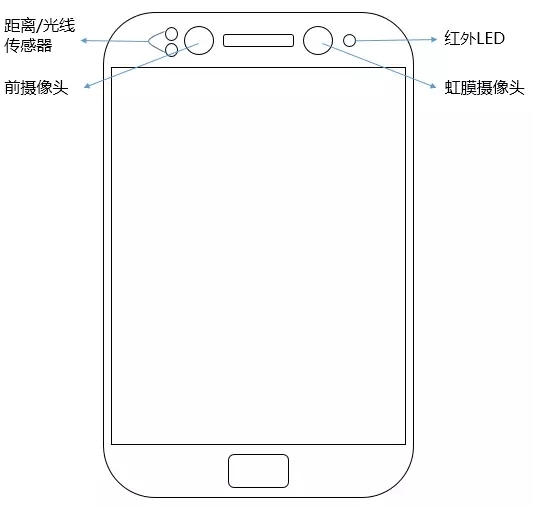
2. Distance limitation: At present, when the mobile phone is used for iris recognition, it needs the distance between the human eye and the mobile phone at 20-35cm. This poses some challenges to users' ease of use. Of course, after the user is accustomed, this problem is quite easy to overcome.
3. Single function: Since the iris is opened, the screen of the mobile phone needs to be opened to facilitate the user to align the eyeball, so the iris power consumption is too large. So on the phone, in addition to the password, it is not convenient to do other functions. The function is relatively simple.
4. Privacy: Some people who use personal characteristics such as fingerprints and irises as personal privacy are unwilling to disclose such characteristic values ​​to mobile phones, especially to government departments.
Iris recognition deconstruction
Just as Apple introduced fingerprint identification to instigate the fingerprint identification industry chain, Samsung’s introduction of iris recognition will also bring new opportunities to the industry chain:
1, Camera Sensor
In general, the iris algorithm only needs 100 pixels to do iris recognition. Taking into account the ease of use, it is necessary to collect the user's eyes at the same time to use the camera more naturally. Generally, 2M to 5M cameras are selected. For single-eye recognition, a VGA (0.3M) camera is sufficient.
However, the iris still has certain requirements for the Camera, similar to the double-Camera inside the same black and white sensor, need to be produced in the Camera, do not use the ordinary Color filter (that is, only through the visible light filter), and adopt only the infrared wide Filters. The most common iris camera is Sony's IMX132. However, in general, the iris does not require a high level of camera, 2M to 5M Camera can do the iris Camera. After the iris is mature, the domestic Geko micro, OV will quickly follow up.
2, iris module
At present, there is no large-scale mass production of the iris, so the domestic iris module is mainly supplied by SPARKLE.
3, module Lens
Sparkle not only produces modules, but also has considerable research in optics. On the iris side, SPARKLE not only provides modules, but also Lens dedicated to iris modules. This Lens also needs to pass only infrared light while filtering other light. In addition, Apple supplier AAC also began mass production of iris Lens.
4, infrared LED

The main infrared wavelength is 700nm-2500nm. Camera Sensor's infrared light sensitivity above 900nm is poor and requires stronger light to sense. This requires more current in the infrared LED and more power consumption. The wavelength below 800 nm is too close to visible light, and the user can see red light when using it. Therefore, the iris recognition wavelength is generally 800nm-900nm.
At present, the main supplier of infrared LED is the international LED manufacturer OSRAM. For different iris recognition algorithm requirements, OSRAM can provide infrared LEDs with different wavelengths such as 810nm and 850nm. In contrast, if the black/brown eyeball is detected by iris, infrared light is needed, and visible light is not suitable; while the blue-green eyeball is better with visible light, and infrared light is also acceptable, but the performance is slightly poor. So 810nm is more suitable for iris detection.
Careful readers may find that on the schematic diagram of the iris detection, the infrared LED was placed obliquely, which is unscientific. However, in order to let the infrared light refracted back, it is necessary to make the LED light beam turn around 5 to 8 degrees. Infrared LED patch is no way to tilt, so the general iris phone is a mobile phone shell on the fuss. Add an angled Lens to the infrared LED of the shell to achieve the angle conversion.

However, doing so will make the phone assembly cumbersome. OSRAM also found this problem, they made an article on the infrared LED, the infrared LED light outlet to do a certain angle, and ultimately solved this problem.
5, algorithm:
Foreign companies: U.S. Iridian, Iriteck, Korea's Jiris, Samsung (Note 7 uses Samsung's own algorithm), Delta ID (Fujitsu mobile phone iris solution provider), and Panasonic.
Domestic companies: China Science and Technology Co., Ltd., Red Hat, Siyuan Co., and Hong Hong.
Some views on iris recognition
It can be seen that IRIS has a large impact on the entire ecological chain. The iris algorithm determines what kind of camera you need, what Lens you need, what kind of modules you need, what kind of infrared LED you need. However, the iris algorithm is pure software and not in any hardware. So the profits of the algorithm company can only be obtained through the form of authorization. This requires that the algorithm company needs all to get through from the hardware to the client. The difficulty is still great.
One of the reasons that affect the development of the iris is the opening of the iris, especially in the dual Camera era. It is very likely that the former Camera is also a dual Camera. Increasing the iris recognition will seriously affect the appearance of the mobile phone, which is one of the reasons that affect the development of the iris. The opportunity to solve this method is to make an RGBIR Camera. That is, one of the G's light collection becomes IR (infrared) light collection. The advantage of this is that when doing the former Camera, collect the light of RGB; When doing the iris Camera, collect the light that the infrared LED refracts through IR. However, in doing so, on the one hand requires a special ISP to accurately perform light collection. On the other hand, when RGBIR sensor is used as an ordinary camera, there is less R light collection and poor light performance. Sensor suppliers are also required. Continue to optimize performance. Currently there are Himax and OV companies that research and develop RGBIR.
At present, the cost of the iris algorithm is relatively high, which also affects the rise of the iris. Of course, this is pure software cost after all, I believe that after the volume, the cost will not be too high. In addition, iris power consumption is relatively large (need to open the screen and camera), so the main function of the phone is to play a role in replacing the password, the role of a single also affects its future development.
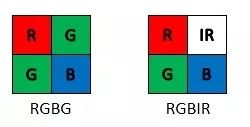
At present, the FIDO (Fast Identity Online) alliance, the online fast authentication alliance, is committed to "eliminating passwords" on mobile phones, and secure payment is becoming more and more important on mobile phones. Iris recognition is a type of biometric recognition with a very high level of security. Technology is bound to have a place in password authentication. Will Samsung Note7 open the login password for the iris recognition landing phone?
Second, Note7 secret weapon Sensor HubAt Samsung's conference, in addition to the support for iris recognition, the perfect support for the recent hot VR is another note 7 features. Because the VR device needs to detect the movement of the head in time, the relevant display is updated in time. This requires the Sensor Hub's precise algorithm because only good algorithms can make VR devices respond in a timely manner. This leads to another focus we discussed today - the Sensor Hub.
What can the Sensor Hub do?
Sensor Hub, Chinese name: Sensor Control Center. Sensor Hub has two main functions:
1. In the case of CPU hibernation, real-time control of the sensor is achieved so as to achieve the function of reducing power consumption.
2. Integrate data from different types of Sensors to achieve a combination of multiple sensor data.
In a nutshell, the Sensor Hub can perform the following operations:
1. Gesture Recognition: Sensing human gestures, such as flipping a mobile phone, tapping a mobile phone, shaking a mobile phone, picking up a mobile phone, and other gestures. Cases can be realized: flip mute, refuse to answer the phone, shake to switch the background picture and pick up the answer phone and other functions.
2. Device status recognition: The state of the device is sensed, such as: the phone is face up/down, the phone is on the table, in the pocket, or in the hand. Achievable case: When the mobile phone is in the pocket, the ringtone will be automatically maximized; when it is on the desk, it will be turned to the silent vibration mode.
3, user status recognition: sensing the user's state, such as: running, walking, standing, sitting down and so on. Functions: When walking/running, the step function is automatically turned on, and after standing and sitting, the related functions are suspended.
4. Judgment of user traffic behavior: sense the user's status when he/she is in traffic, such as driving, taking a train, taking an elevator, etc. To achieve the function: In the driving state, automatic Bluetooth connection; and answer the phone on the train, open the noise cancellation function.
5. Indoor positioning/indoor navigation: Outdoor positioning is currently mainly GPS+AGPS. AGPS obtains GPS assistance information (including ephemeris and azimuth elevation angles of GPS, etc.) through a base station near the mobile phone, which helps the GPS to be positioned quickly and accurately. In the case where the GPS signal is not strong, the mobile phone can also be positioned by a plurality of mobile phone base stations.

However, GPS and AGPS cannot solve the problem of indoor precise positioning. The current general indoor positioning method is that the mobile phone determines the indoor location of the mobile phone by judging the distance from the surrounding WiFi router or the low-power Bluetooth BLE device. Apple's iBeacon technology uses low-power Bluetooth BLE for location positioning and other applications.
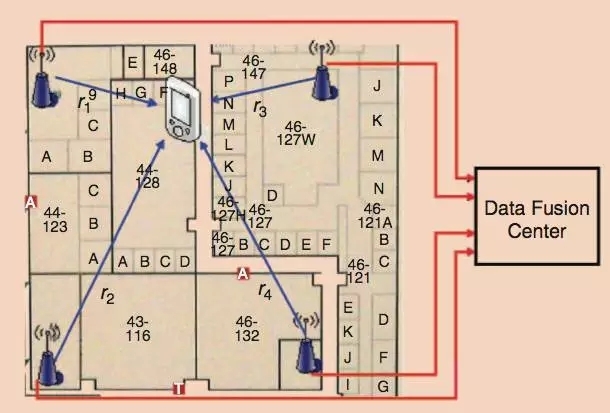
However, whether GPS/AGPS positioning or WiFi/Bluetooth positioning is used, the Sensor Hub can integrate the acceleration of the current motion and inertial navigation at the angular velocity. With geomagnetic data, the direction of motion can be accurately determined and more accurate. For indoor positioning.
And with the integration of Sensor Hub data, more functions can be realized, especially in indoor and outdoor switching.
Common implementation features:
1. When the vehicle suddenly travels down to the tunnel or below the elevated plane, it suddenly loses the GPS signal. At this time, the mobile phone only needs to determine the current motion acceleration and angular velocity to accurately determine the direction of movement of the vehicle.
2, combined with the pressure sensor, you can quickly locate the user's floor, to help users find the merchant shop want to go, or find a car.
3, if combined with the camera, you can also navigate on the current shooting screen. (For example, inform the location of the shop, inform the direction)

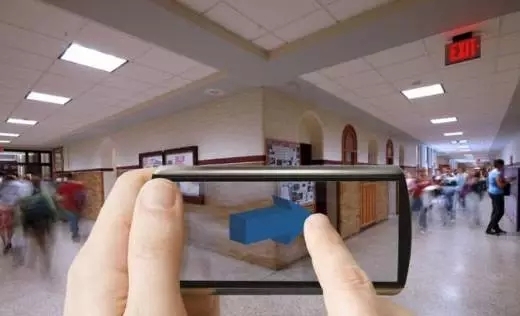
4. Wearable / VR applications: Because the Sensor Hub can achieve accurate device state recognition and user state recognition, the Sensor Hub can play a big role in wearable and VR. For example, raising his hand, the bracelet shows time. For example, when playing a VR game, the VR device judges the user's state through the Sensor Hub data, thereby displaying different scenarios.
How to implement Sensor Hub?
How can the Sensor Hub work with an assist that is so powerful? It is understood that it mainly requires an MCU or DSP to handle the relevant Sensor data.
On the phone, there are three ways to implement the Sensor Hub:
1. As a separate chip, the Sensor Hub is placed between the CPU and various types of MEMS.
Advantage: Sensor Hub chip and MEMS can be flexibly switched. Optional diversity.
Disadvantages: There are many types of support and debugging is difficult.
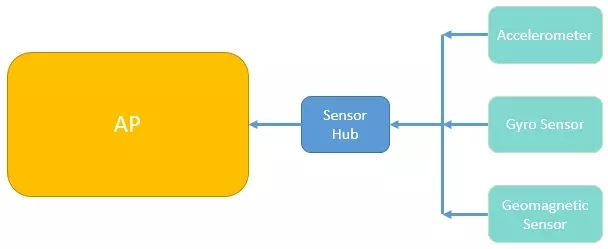
2. The Sensor Hub and the MEMS are combined to receive the signals from different sensors for fusion, and then the combined signals are provided to the AP.
Advantage: Because sensor has been selected, debugging is relatively simple.
Disadvantages: sensor is basically fixed, customers can not choose.

3. The Sensor Hub is integrated by the AP. The sensor first provides the data to the Sensor Hub inside the AP, and the Senor Hub converges and then provides the data to the AP.
Advantages: Sensor is free to choose and has the opportunity to reduce costs.
Disadvantages: It is difficult for the AP algorithm and the AP needs to coordinate with each sensor.
Some opinions about the Sensor hub
From the cost point of view, if the sensor is placed outside, whether it is independent or put together with the sensor will add additional costs. On the one hand, the AP can reduce the cost of the MCU through a low-cost process. On the other hand, it can also share an MCU with other functions to achieve the purpose of reducing costs.
From the perspective of the mobile ecosystem, the first is the situation that companies with MCUs would like to see, but companies such as ST that have both MCU technology and Sensor technology have the ability to do this. Previously, Apple, Samsung used this program. But Apple's latest solution is the third one. The Sensor company certainly hopes to do the second, because on the one hand it can package and sell all of its own Sensors, on the other hand it can also improve its own Revenue. But most Sensor companies do not have much work in the MCU field. The third kind is the way AP suppliers want to achieve. At present, it is also the way customers most want to see. Although this will require the AP vendors to implement the relevant algorithms, it is also more convenient for the end-customers to choose different types of sensors so as to obtain a better price/performance ratio.
From the smart wear ecological chain, the first kind has certain advantages. For example, the smartband can complete the integration of Sensor data with the MCU of the Sensor Hub, and achieve partial control without the need to join the master chip. Therefore, in addition to mobile phones, the company’s target market for independent Sensor Hub will also put more effort on smart wear.
Third, summaryNot all technology emerges to bring new changes to the industry. It is stronger than Apple's time to fold. As the most powerful leader of the Android system, relying on a complete industrial chain, Samsung has always been in and The front line of Apple's competition is also the only Android device that can compete with Apple. Samsung's own development and investment in technology is also worthy of peer admiration. In today's homogenization of smart phone functions, Samsung has been able to inject a steady flow of water into the industry to promote the further development of the smart phone industry by forcing these two technologies. This will be left to everyone's assessment.
We provide wire harness manufacturing services for cable harnesses and built-to-print cables used in many industries, such as computer, game machine, POS machine, ATM , audio/video, electro-mechanical, data communications, telecommunications, medical, etc.
Related Products:speaker cable,customized cable assemblies,electrical cable assemblies.
We have developed a tradition of high-tech engineering, prototyping, and quality custom cable manufacturing at very competitive pricing. Also with professional flow chart (wire cutting-stripping-copper twisting-crimping-crimping 100% inspection-soldering-molding-asssembling-testing-FQC100% -OQC) , which can help us support customers with stable quality.
Speaker Cable,Straight Bnc Cable Assembly,Idc Red Custom Cable Assembly,Customized Cable Assemblies,EV Cable Assemblies,Cable Assembly,Custom Cable,Customized Cable Assemblies
ETOP WIREHARNESS LIMITED , https://www.etopwireharness.com
